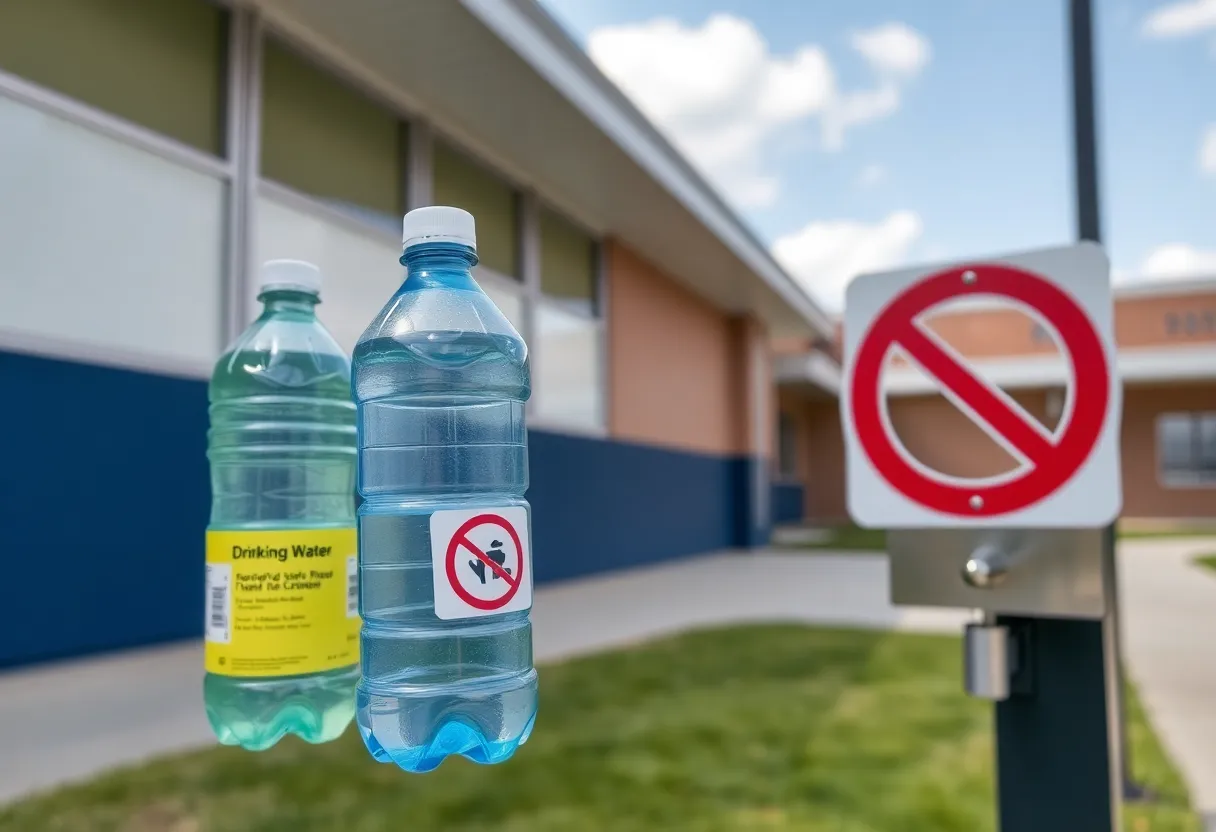News Summary
Asheville, North Carolina, is facing severe flooding as the remnants of Hurricane Helene bring heavy rainfall and hazardous conditions. A Flood Watch has been issued until Tuesday morning for multiple counties. Residents near the French Broad and Swannanoa rivers are urged to evacuate, with forecasts predicting up to eight inches of rain. Officials warn of potential record flooding, akin to the Great Flood of 1916, while flash flood emergencies and evacuation orders are already in place. Major road closures and power outages are impacting the region.
Asheville, North Carolina – Severe flooding is anticipated in Asheville and surrounding areas due to the remnants of Hurricane Helene, prompting officials to issue a Flood Watch until 8 A.M. Tuesday for parts of Western North Carolina, including Northern Greenville and Northern Pickens Counties. May 12 has been designated as Weather Warn Day due to heavy rainfall and an increased threat of flooding.
In light of the impending weather conditions, residents in flood-prone areas, particularly along the French Broad and Swannanoa rivers, are being urged to self-evacuate. The National Weather Service has indicated that this weather event could result in record flooding, comparable to the historic Great Flood of 1916 which caused 80 fatalities in Asheville.
Forecasts predict that the Asheville region could see up to eight inches of rain by Friday afternoon, with over 30 inches reported in certain parts of North Carolina following Hurricane Helene’s passage. The hurricane, which reached Category 4 status, made landfall in Florida on September 26, bringing with it 140 mph winds and a significant storm surge. Experts explain that the intense rainfall, coupled with elevated soil saturation and river overflow conditions due to previous storms, enhances the risk of flooding in the region.
Metrics from the National Weather Service show that orographic lifting—where moist air rises over mountainous terrain—also contributed to greater precipitation levels during Hurricane Helene’s approach. Areas in and around Asheville are already experiencing the ramifications of heavy rainfall, and flash flood emergencies have been issued, particularly in Rutherford County, due to imminent dam failure warnings at Lake Lure.
Evacuation orders have been put in place across several counties, including Buncombe and Madison, with a shelter established at the wellness center behind Madison Early College to accommodate evacuees. Additionally, mandatory evacuation notices have been issued for neighborhoods along the Swannanoa River. As a result of the flooding, major interstates such as Interstates 26 and 40 have been closed in both directions near Asheville due to mudslides and standing water.
Power outages have significantly affected residents, with over a million Duke Energy customers in North Carolina reporting disruptions by Friday morning. Local businesses may also face closures due to staff shortages and operational difficulties stemming from the severe weather conditions.
As highways and main roads become impassable due to flooding and downed power lines, the North Carolina Department of Transportation has issued warnings against travel unless absolutely necessary and advises individuals to avoid driving through any areas of standing water.
In addition to weather-related news, Asheville police are currently investigating a disturbance at an Embassy Suites hotel where U.S. Representative Chuck Edwards was present on Saturday night. An intoxicated individual reportedly caused a scene following a speaking engagement. Officers were called to manage the situation. Incident reports regarding this occurrence are expected to be available for public access.
The potential for historic flooding in Asheville is leading officials to closely monitor river conditions and weather alerts, ensuring that residents stay informed about safety measures and any developing situations related to flood risks.
For residents of Asheville and Western North Carolina, the message is clear: taking precautions and adhering to official evacuation orders may prove essential in mitigating the impacts of what is predicted to be one of the most significant weather events in recent memory.
Deeper Dive: News & Info About This Topic
HERE Resources
I-40 to Reopen in Stages After Hurricane Helene’s Flooding
Asheville High School Hosts Key Girls Soccer Match
MANNA FoodBank Holds Farewell Ceremony After Flood Damage
Heavy Rain and Flooding Ahead: Prepare for an Atmospheric River!
Interstate 40 West Closure Planned in Asheville
Asheville Business Community Rallies for Summer Tourism
Severe Weather Alert Issued for Western North Carolina
Asheville Residents Advised to Exercise Caution Due to Flooding
Attorney General Pam Bondi Advocates Tough Crime Policies
Western North Carolina Tourism Revival Post Hurricane Helene
Additional Resources
- Fox Carolina: Photos of Storm Flooding in Asheville
- Wikipedia: Flood
- ABC 11: Why was the flooding in Asheville so extreme?
- Google Search: Asheville flooding Hurricane Helene
- WLOS: National Weather Service compares Helene Event to Historic Flood of 1916
- Google Scholar: Hurricane Helene Asheville
- Charlotte Observer: Hurricane Helene brings historic flooding to Asheville

Author: STAFF HERE ASHEVILLE WRITER
The ASHEVILLE STAFF WRITER represents the experienced team at HEREAsheville.com, your go-to source for actionable local news and information in Asheville, Buncombe County, and beyond. Specializing in "news you can use," we cover essential topics like product reviews for personal and business needs, local business directories, politics, real estate trends, neighborhood insights, and state news affecting the area—with deep expertise drawn from years of dedicated reporting and strong community input, including local press releases and business updates. We deliver top reporting on high-value events such as the Asheville Bread Festival, LEAF Festival, and mountain sports tournaments at Biltmore Estate. Our coverage extends to key organizations like the Asheville Area Chamber of Commerce and Explore Asheville Convention & Visitors Bureau, plus leading businesses in hospitality and brewing that power the local economy such as the Biltmore Estate and Sierra Nevada Brewing Company. As part of the broader HERE network, including HERECharlotte.com, HEREGreensboro.com, HERERaleigh.com, and HEREOBX.com, we provide comprehensive, credible insights into North Carolina's dynamic landscape.





